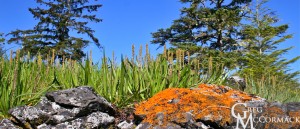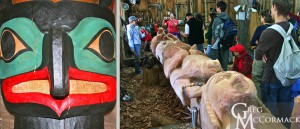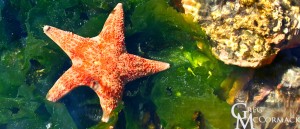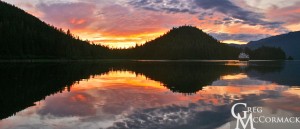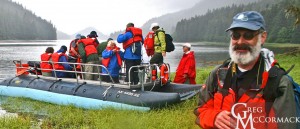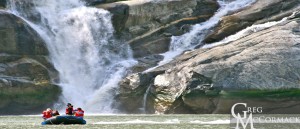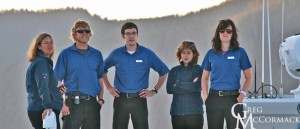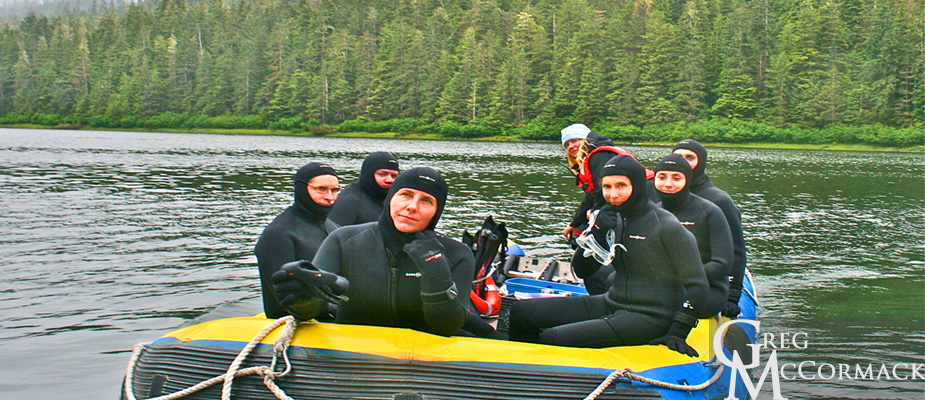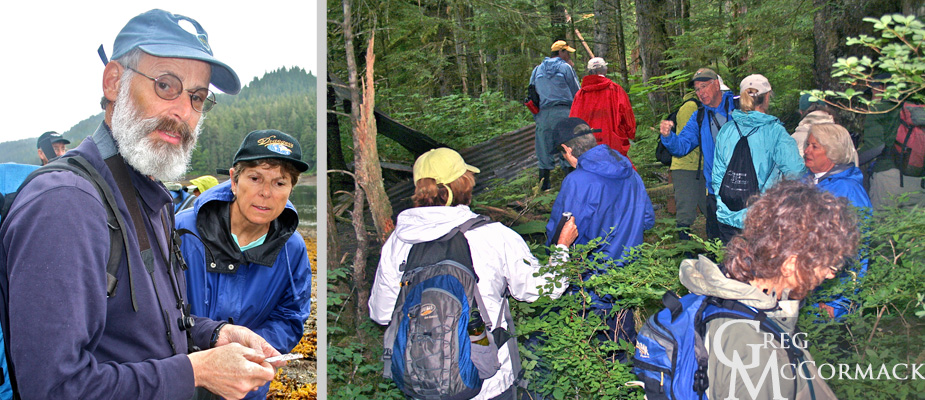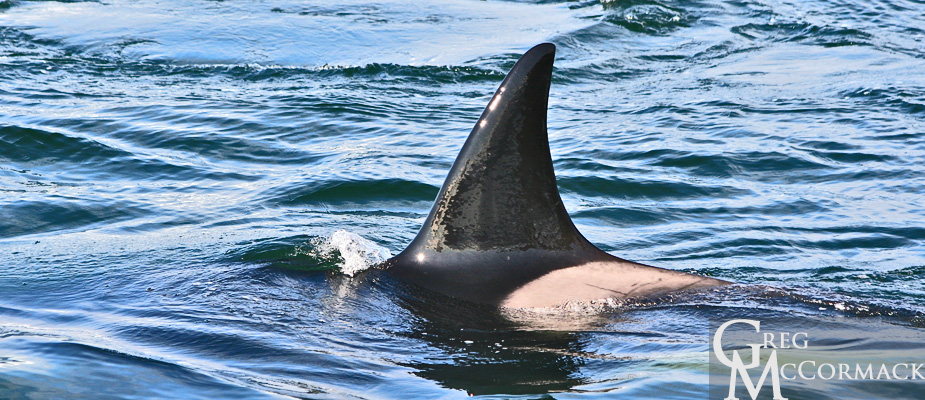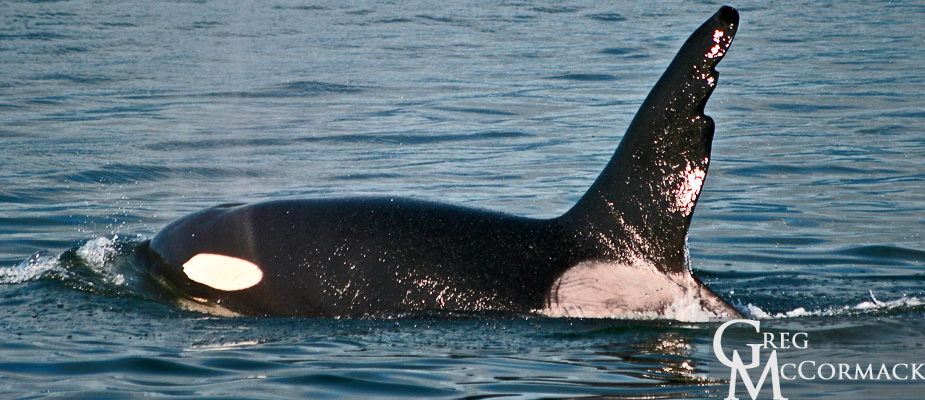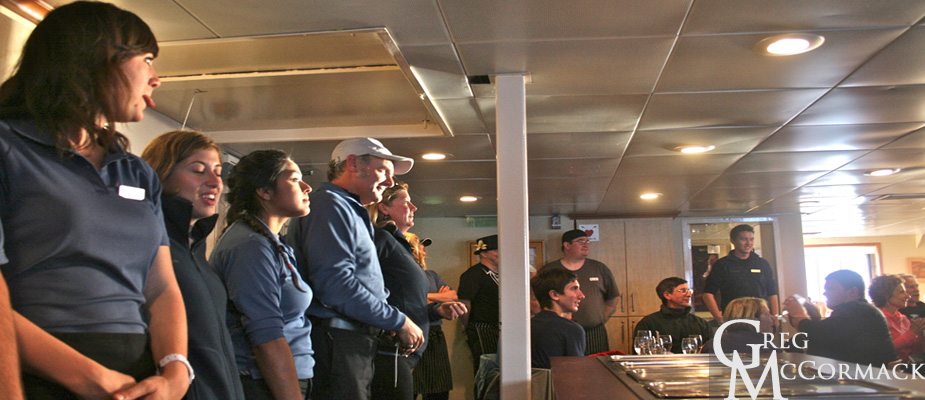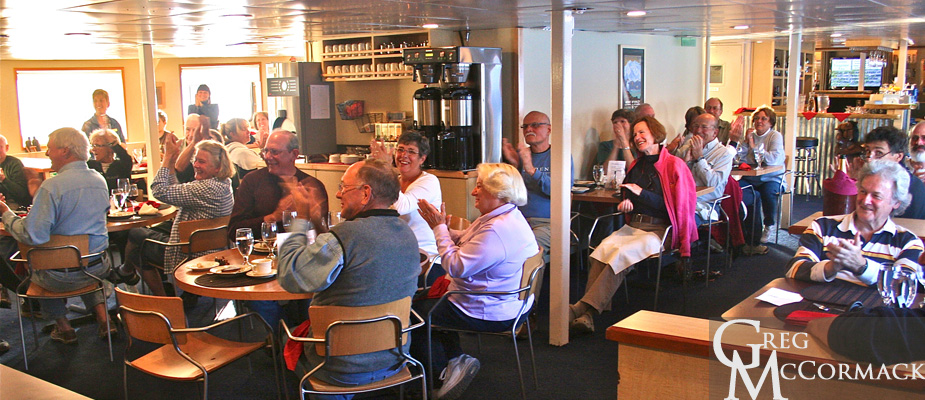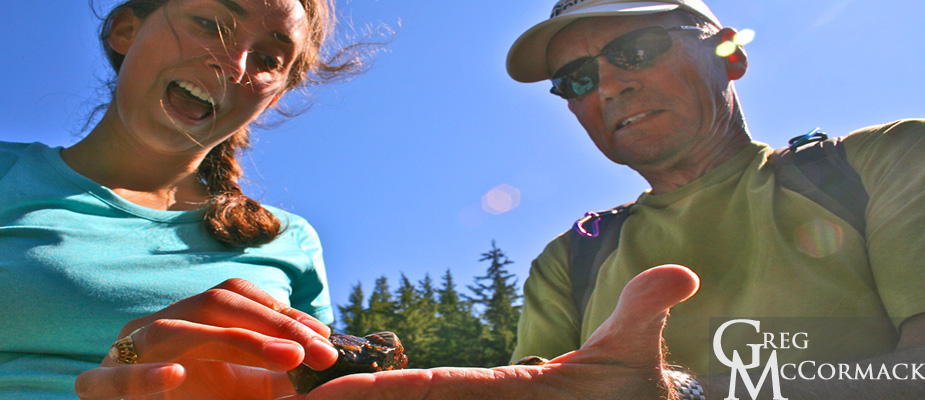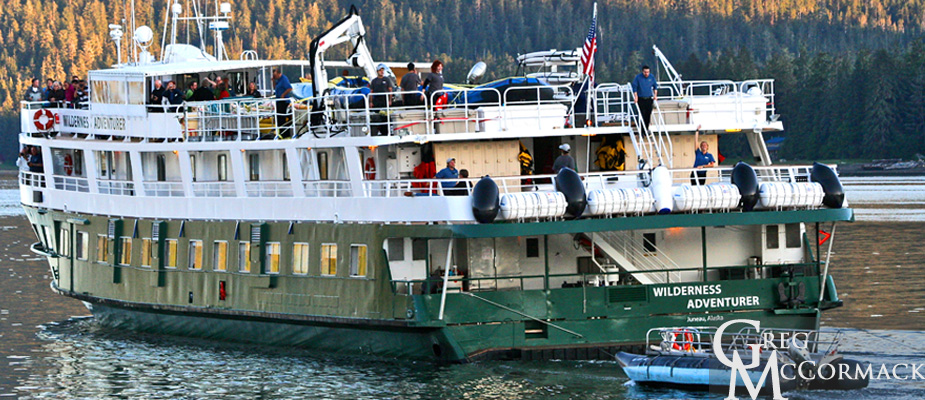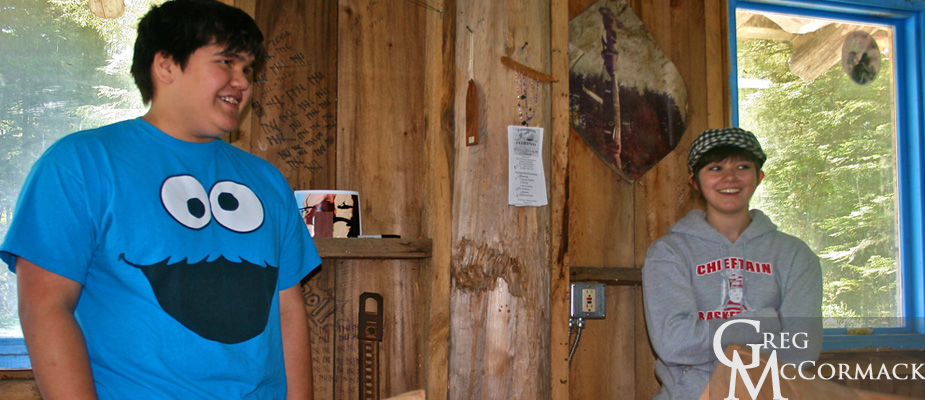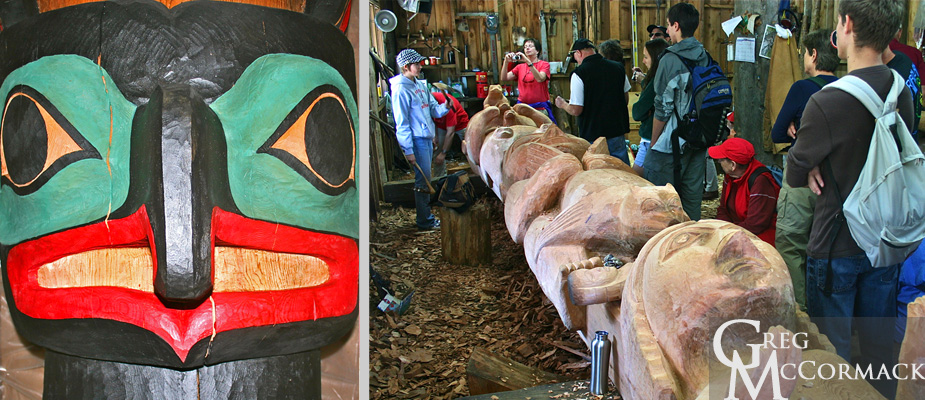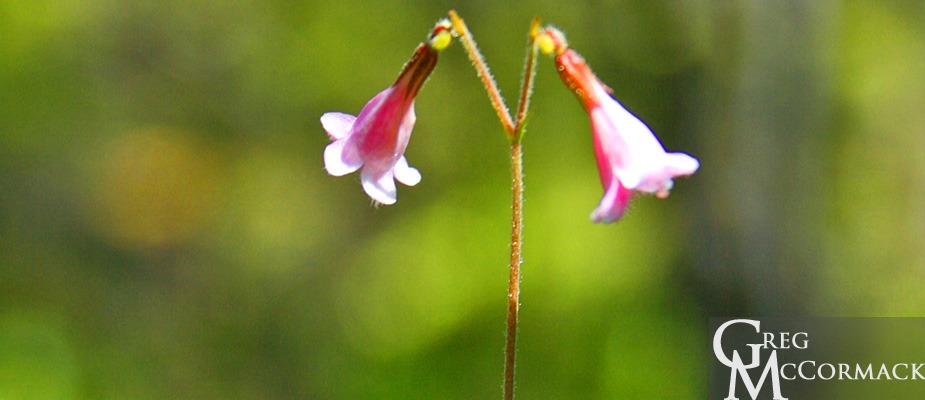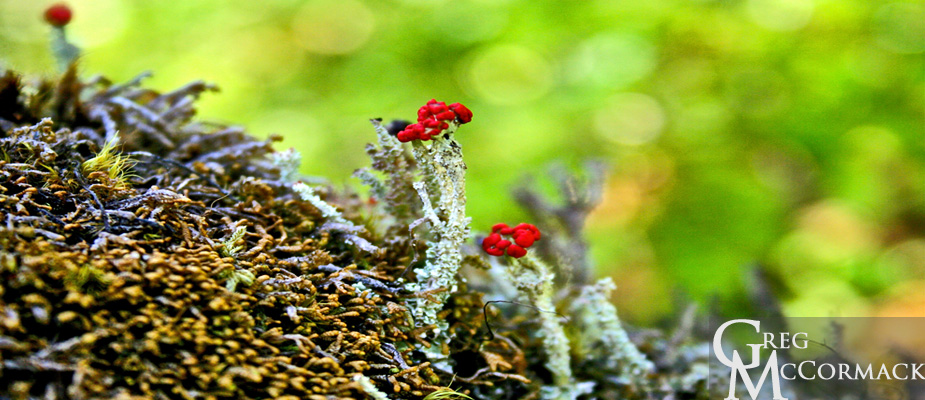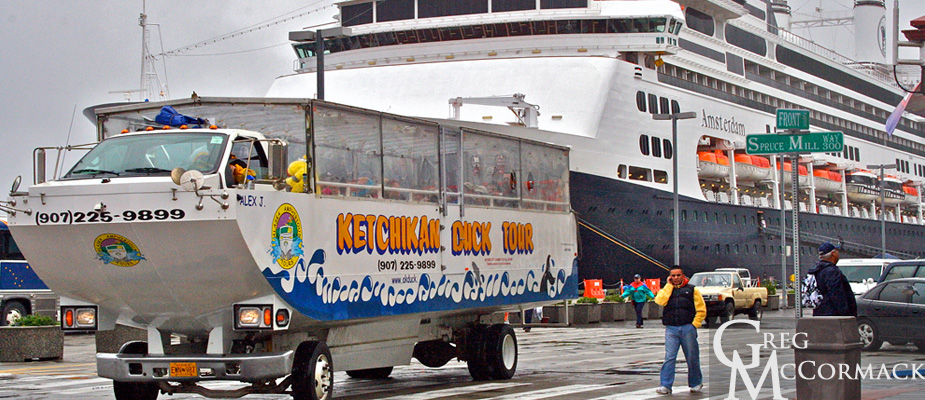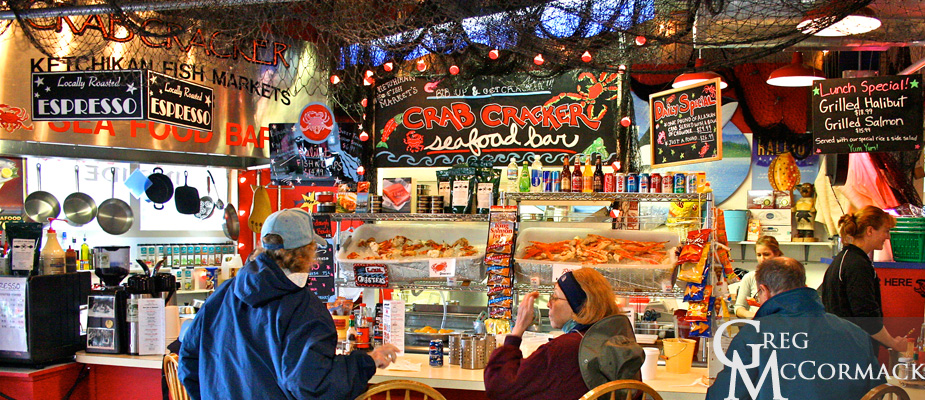where is gmack now? innersea discoveries expedition week 11
It has been an exciting week on the InnerSea Discoveries Expedition Click Links Below to read daily updates from Week 11 of the Trip:
July 10 – July 16, 2011
Sunday | July 10
“Kayaking, Sauntering, Kelp-Bugling”
Monday | July 11
“Totems, Plankton, Weather”
Tuesday | July 12
“Invertebrates and Our Sister-Ship”
Wednesday | July 13
“Phantasmagorical Seascapes”
“Tidal Ebb & Flow”
Friday | July 15
“Killer Whales”
Saturday | July 16
“The Capitol City of Juneau”
Saturday | July 16
September 26, 2011 by admin
Filed under InnerSea Discoveries
The Capitol City of Juneau
“Find your place on the planet, dig in and take responsibility from there.” –Gary Snyder
“If I were to choose the sights, the sounds, the fragrances I most would want to see and hear and smell–among all the delights of the open world–on a final day on earth, I think I would choose these: the clear, ethereal song of a white-throated sparrow singing at dawn; the smell of pine trees in the heat of the noon; the lonely calling of Canada geese; the sight of a dragon-fly glinting in the sunshine; the voice of a hermit thrush far in a darkening woods at evening; and–most spiritual and moving of sights–the white cathedral of a cumulus cloud floating serenely in the blue of the sky. Edwin Way Teale, “On a Final Day”
Disembarkation day!
It’s off to many different destinations around the country for our guests. It is very tempting to take them up on their offers to stay if ever we visit their hometowns. Juneau is bustling this morning as we dock alongside the pier adjacent to large cruise ships and a float plane dock
A local tells me that the recent U.S. Census had between 5 and 6,000 people moving out of the capital city of Juneau, a drop from around 31,000 to 25k over the last 10 years.
Crew work hard in anticipation of another group that will board in less than 8 hours.
Thursday | July 14
September 26, 2011 by admin
Filed under InnerSea Discoveries
Port Houghton
“It is only with the heart that one can see rightly, what is essential is invisible to the eye.” –Antoine de Saint Exupery
Today I lead two groups of hikers into the upper reaches of an incredibly rich ecosystem. We see hundreds of flatfish scuttling about on the mud-bottoms as we make our way up the estuary. 1000s of salmon dart in front of our small 10-passenger boat and a few dozen leap out of the water for some breaching action.
I ask the adventurers: “Why do salmon breach or come completely out of the water?” The answers all sound plausible, such as “because it’s fun” or “they leap to catch insects”. My observations: salmon just started leaping out of the water in the last two weeks. Countless thousands of them are nearing the end of their life-cycle by coming back—via olfactory and magnetic cues–to their natal streams. They are undergoing tremendous hormonal changes and are gearing up for the ultimate biological endeavor: Spawning until they die.
Are the salmon are leaping perhaps to knock off ecto-parasites such as sea lice? Maybe it is the gravid females trying to break up the chains of eggs developing from within their abdomens? Perhaps so much testosterone or progesterone is like having a bunch of high-school teen-agers getting ready for prom night? Whatever the reason, within weeks, all of these fish (the exception in the salmonid family are the Steelhead trout which can breed more than once) will be dead and their carcasses will be feeding dozens of birds, mammal and plant species.
We have spring tides (high highs and low lows) just after the full moon. This morning the low is a -2.5 feet and 6 hours later a high of over 14-feet. Imagine trying to fill a swimming pool 16 vertical feet in 6 hours, that’s 6 inches every 15 minutes of an incoming or outgoing tide.
The low tide is exceptionally different from the time that we scouted last night (10 p.m. at mid-tide). Many dozens of acres in the estuary are exposed and we have to drop-off a mile further out. The sessile or attached creatures are abundant in the intertidal zone. Sea anemones, crabs, urchins, mussels, barnacles, limpets and others are all competing for available space.
We find thousands of tiny garnets from garnet-infused shist rock. Eventually we make it above the wrack zone where algal drift is piled up and desiccating on top of halophytic or salt-loving grasses.
Harbor seals ply the waters and eagles are seen perched in almost every standing deadwood structure (snags) lining the serpentine slough of this biologically rich and productive ecosystem. Juvenile and adult Bonapartes Gulls, Arctic terns and mew gulls cry out as they search the waters for small schooling fish.
The old-growth forest is impressive. We enter and are surprised to find an old trappers or fox farmers dilapidated cabin nestled in amongst the old-growth spruce and hemlock forest adjacent to a euphonious, clear-running stream. We could only imagine what other stories this area had in the forgotten past. Fox farming occurred in many areas of Southeast Alaska in the early 1900’s.
We get back in time for a hot lunch on this misty morning.
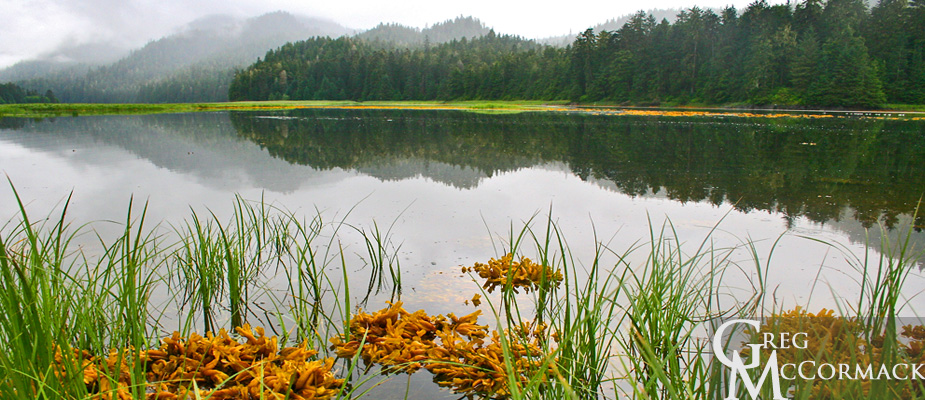
In the afternoon, I go out with a smaller group and the same boat driver Michael. He and I are stunned at the height of the high tide. We motor up two miles further than the low tide and the whole area is almost unrecognizable. What was at least 100 acres of exposed marsh and estuarine habitat was completely inundated.
It was very tempting to motor farther up and get dropped off in bear country, however it was prudent to plan for the outgoing tide and so we were dropped off in what turned out to be the same exact spot for our pick-up.
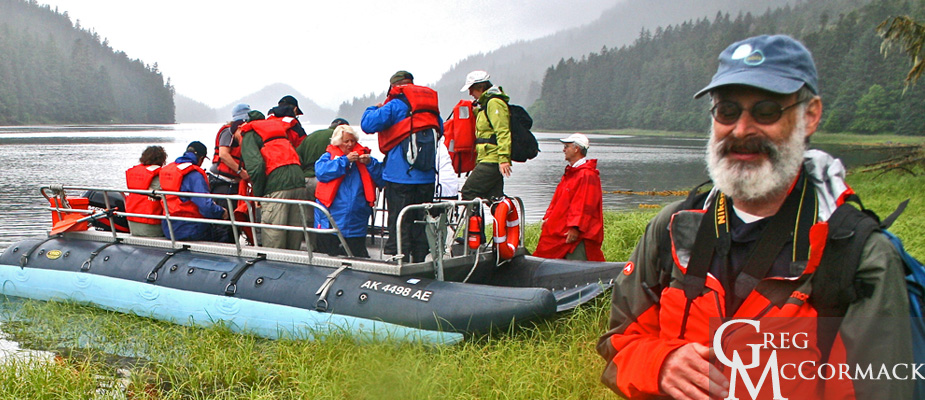
Richard Droker, our guest that is a geologist and lichenologist (contributed images to the book Macrolichens of the Pacific Northwest, by Bruce McCune and Linda Geiser) was excited about my finding dozens of lichens. He commended me on my interpretation of the last several decades of forest management practices and the issues surrounding the conservation of the highly migratory salmon species. He said it was the best summation he’s ever heard on the issues, a nice compliment.
At the end of my discourse, Richard hands me a slip of paper labeling several species of bryophytes on it, including: Sphagnum moss, Hylocomium, Rytidiadelphis, Rhizomnium, Conocephalum, Scapania, and Discranum.
Later in the evening I see Richard looking through a hand lens at a small spruce branch laying on one of the tables in the lounge area. “How many species do you see, Richard…a half-dozen?”
A few minutes later, I am amazed to see the list: Bryoria, Alectoria, Usnea, Ramalina, Hypogymnia, 2 species of Parmelia, Nephroma, Platismatia, Lobaria, Lecanora, Lecanorine, Lepraria, Chrisothrix, Pertusalaria, Trentepohlia, a moss and liverwort!
Friday | July 15
September 26, 2011 by admin
Filed under InnerSea Discoveries
Endicott Arm & Dawes Glacier
“The earth, that is sufficient
I do not want the constellations any nearer,
I know they are very well where they are,
I know they suffice for those who belong to them.”
–Walt Whitman, Leaves of Grass, “Song of the Open Road” (1855)
We lift anchor at 0500 at Wood Spit and enter Holkham Bay, the outlet of both the Tracy and Endicott Arm fiords. We take the route up the Endicott in a thick fog. I assure guests that we should see a clearing close to the glaciers. High pressure is usual near the icefield surrounding the peaks of the Coast Range.
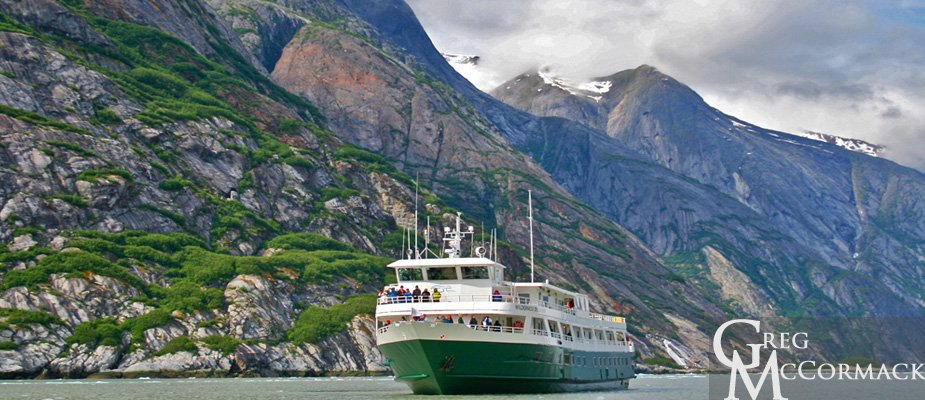
The cold, heavy air sinks down and pushes away the Low Pressure system from the face of the tidewater glacier. As soon as we get within a couple of miles, the fog lifts and we see blue skies and sunshine!
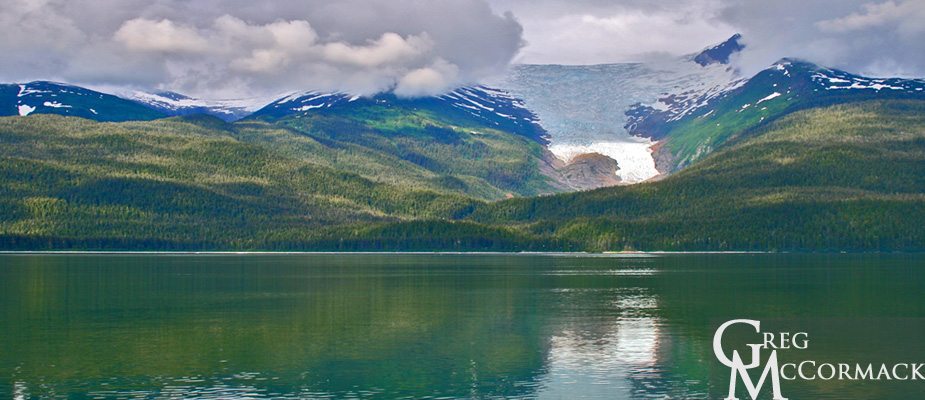
Very little brash ice is seen…mainly growlers with only a few bergy bits and ice-bergs near the spectacular Dawes Glacier. We disembark for small boat tours and stop about ¼-mile away from the 200-foot face of the tidewater glacier. Several small calvings produce the surprisingly loud “white thunder”. The Tlingit Indians had a tribe named after the sound made by the dropping of ice: Sumdum.
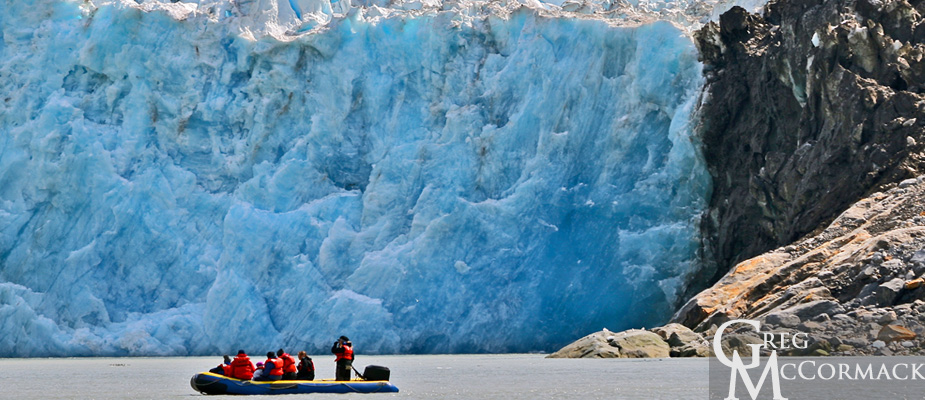
We enjoy seeing Arctic Terns diving down for small fish or resting on growlers. Seals were seen frolicking in the white-water of cascading waterfalls.
Two Tongass National Forest Service wilderness kayak rangers paddle over and come aboard for answering questions. Kevin Hood talks about the history of the Wilderness Act and answered questions about harbor seal census counts.
The most amazing thing Ranger Hood shared during his excellent talk was the 2009-2010 studies of the Dawes Glacier. Laser altimetry showed that the Dawes Glacier had thinned or deflated 70 meters in one year, making it one of the fastest wastage and melting areas in the world. Change is happening at a dramatic pace here in the 100-mile long Stikine Icefield!
After dropping the kayaks and the rangers off of our swim-step aft of the vessel, we search hard along the shoreline for four-legged furry animals. We see hundreds of Surf Scoters, otherwise known as the “poor-mans’ puffin” for the similar appearance to the Tufted Puffin. The latter is typically found nesting on protected islands closer to the Gulf of Alaska or in Glacier Bay National Park and Preserve. On the north shoreline, we see the beautiful blooms of the fireweed.
Outside of the Endicott Arm in Stephens Passage, we are lucky to find a pod of killer whales.
We are happy to see many kinds of behavior such as spy-hopping, lob-tailing and breaching.
A young orca was seen surfacing next to its mother.
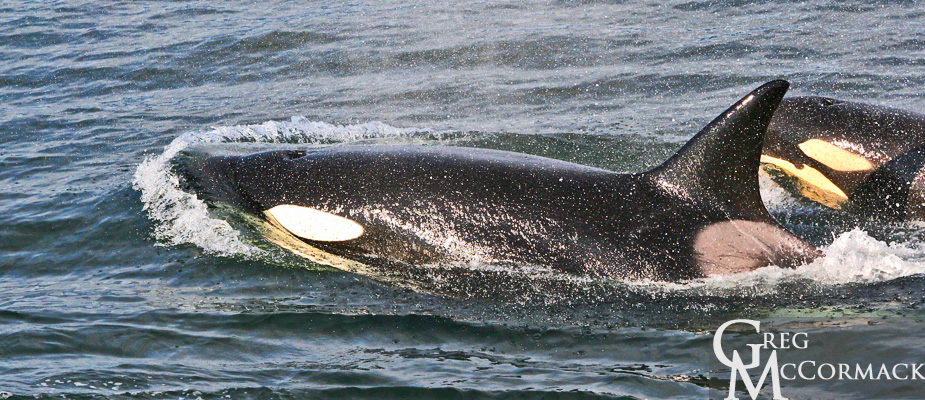
We suspect these orcas are residents as it looks like they are surrounding and echo-locating for fish. We watch them for quite some time as they happen to be swimming north at the same slow pace that we are motoring.
Anchorage for this evening is just outside of the Taku Inlet. It is the Captains’ Dinner tonight and Marce introduces all of the crew to the rousing applause of our friendly guests.
A bit of sadness is felt as it was time to pack suitcases after a slide show presentation in the lounge shows all of the highlights over the last week of cruising.
is bustling this morning as we dock alongside the pier adjacent to large cruise ships and a float plane dock
A local tells me that the recent U.S. Census had between 5 and 6,000 people moving out of the capital city of Juneau, a drop from around 31,000 to 25k over the last 10 years.
Crew work hard in anticipation of another group that will board in less than 8 hours.
Tuesday | July 12
September 26, 2011 by admin
Filed under InnerSea Discoveries
Blashke Islands
“I went to the woods because I wished to live deliberately, to front only the essential facts of life, and see if I could learn what it had to teach, and not, when I came to die, discover that I had not lived.”
-Henry David Thoreau
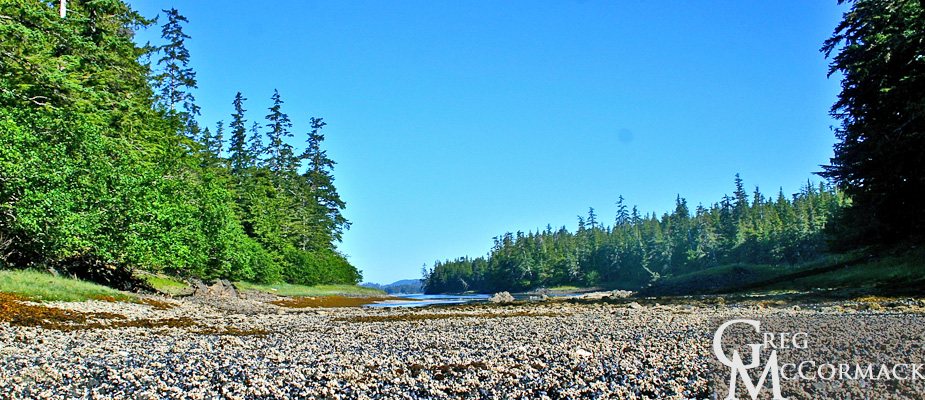
The expedition team is up at 0600 for scouting hikes and kayaks in a place we have not been to all season. A small-craft advisory was in effect for Chatham Strait, hence the change in the itinerary for the next three days.
I lead a walk on the north-east side of a complicated but small archipelago of islands. The far reaches of the arm where our group of adventurous hikers are dropped off is an incredibly rich area for intertidal invertebrates. The channel connects with an inner bay only at high tide.
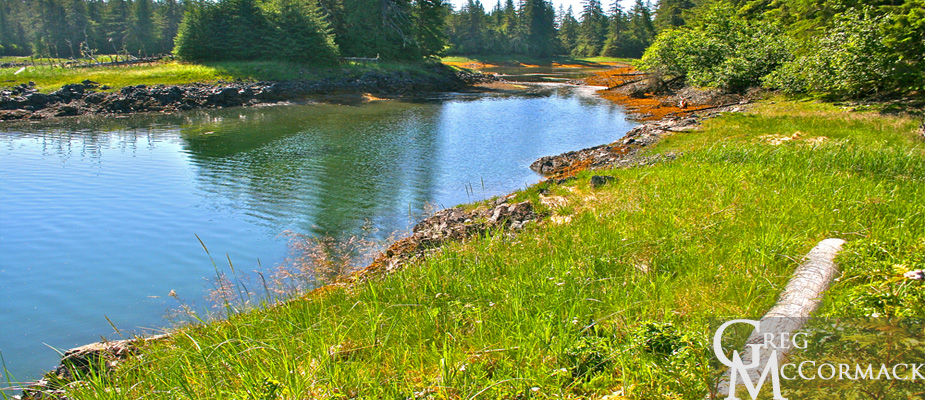
Brightly colored leather stars cover a long and thick bed of mussels.
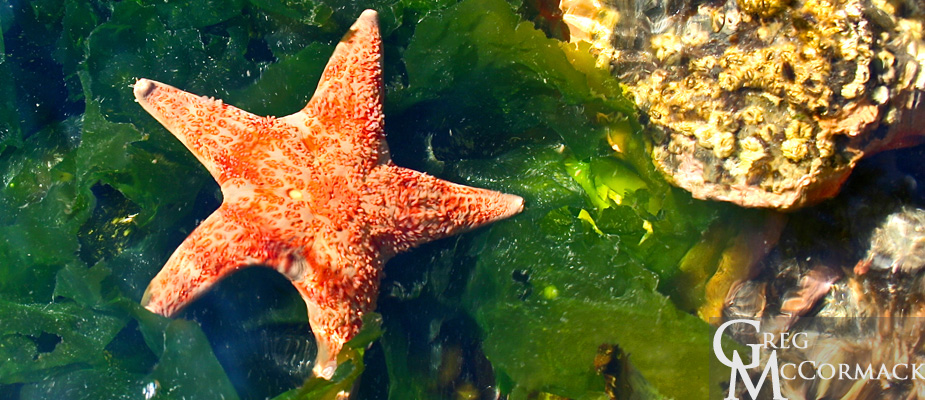
Dozens of tidepool sculpins are scattered about in tide pools, while a couple of Pacific Staghorn Sculpins succumbed to stressors with their last breaths in the shallow and heated tide-pools.
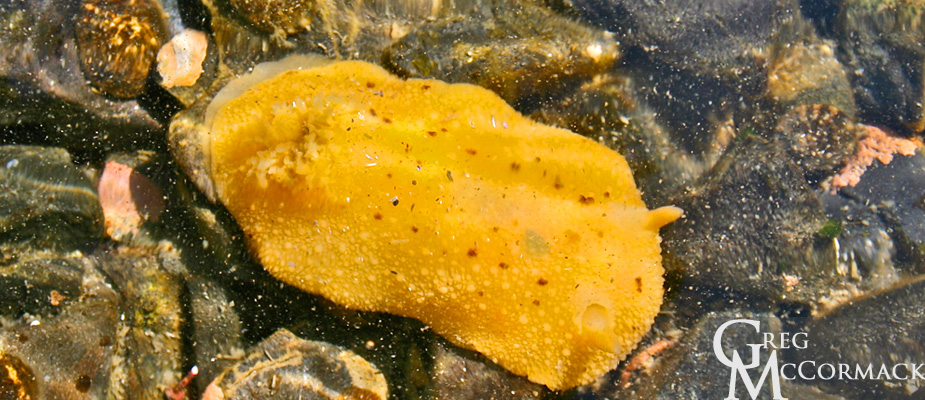
Air temperatures reached close to 80-degrees Fahrenheit, a veritable heat-wave in Alaska.
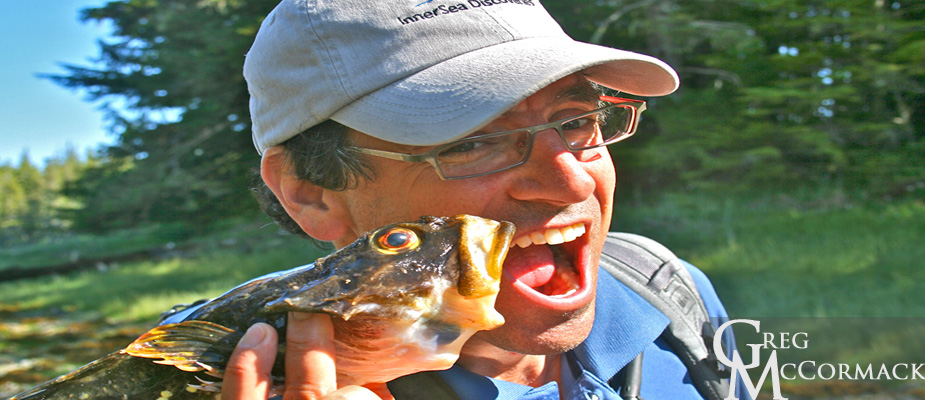
We enjoy a couple of hours of bush-whacking to a muskeg or peat bog. Plants include Shore Pine (Pinus contorta various contorta), the carnivorous round-leaf sundew, Labrador tea, sphagnum mosses, cotton grass, and dwarf hemlocks growing out of the acidic soils.
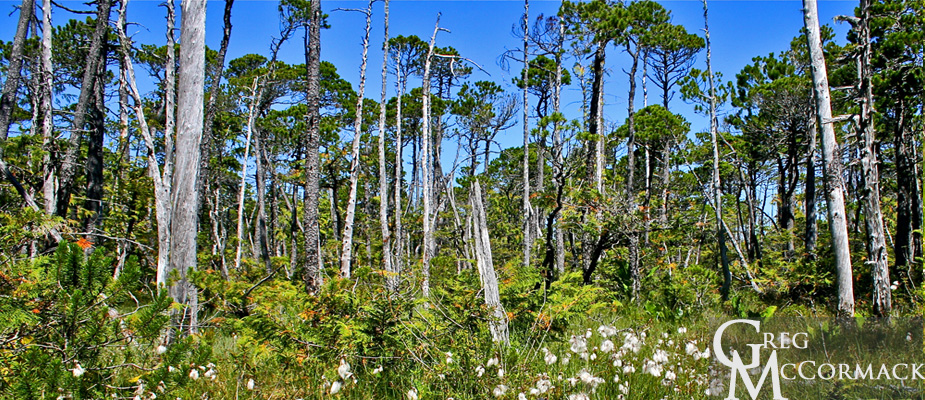
Upon our return to the inner bay of the island complex, everybody wades into the water to clean off the sweat built up from our inland foray.
In the evening everyone gets up on deck for the evening light show along the Wrangell Narrows that splits Kupreanof and Mitkof Islands. I give some interpretation of the navigational markers as we pass through this famous passage. Word is out amongst passengers and crew, that we will be passing—for the first time this summer season—our sister ship, the M/V Wilderness Adventurer.
We all get out on the decks and give a group yell as we pass each other port-to-port at about 5 nautical miles per hour.
Wednesday | July 13
September 26, 2011 by admin
Filed under InnerSea Discoveries
Ideal Cove, Frederick Sound
“Live each day as you would climb a mountain. An occasional glance towards the summit puts the goal in mind. Many beautiful scenes can be observed from each new vantage point. Climb steadily. Slowly, enjoy each passing moment, and the view from the summit will serve as a fitting climax to the journey.” –Joe Porcino
We awake to another hot and sunny day. We are anchored at the mouth of the mighty Stikine River, the longest fast-flowing, un-dammed navigable river in North America. One can motor upstream 170 river-miles to Telegraph Creek.
The glacier and snow-clad Coast Range is stunning in the morning sunshine. I lead a group of kayakers into Ideal Cove adjacent to the 17-mile wide Stikine River delta. Ice-bergs that discharged out of the fiord from the Le Conte Glacier are a brilliant blue against the coniferous-green backdrop of the rainforest.
Port Houghton lies just east of Frederick Sound and the Five Fingers Lighthouse. We go in for sunset and anchorage in Sanborn Arm.
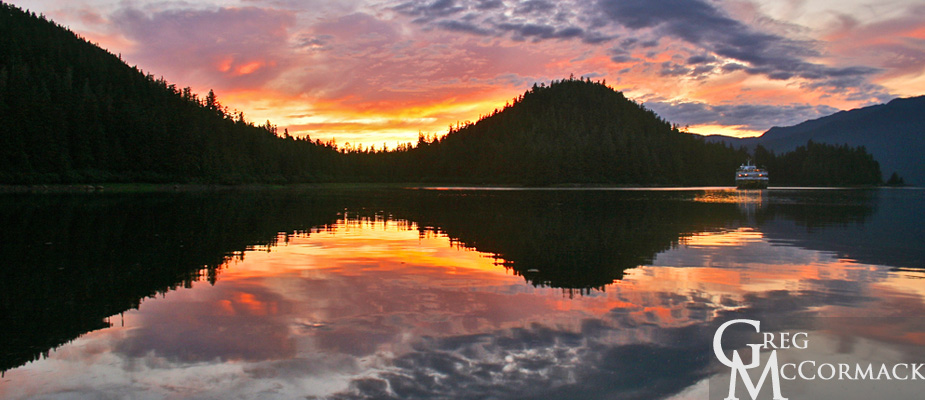
I take a scout boat up Port Houghton Inlet to investigate landings for tomorrows’ hikes. The lighting is ineffable, scintillating and bordering on phantasmagorical. Cloudscapes, landscapes and seascapes are ever-changing and stimulate the brain.
The centuries-old trees in the old-growth forests tower high above the estuarine channel. We spot 100’s of salmon leaping out of the water in anticipation of the spawning to take place in natal streams.
The colorful clouds at sunset are reflected in the still waters. Moments like these are so precious.
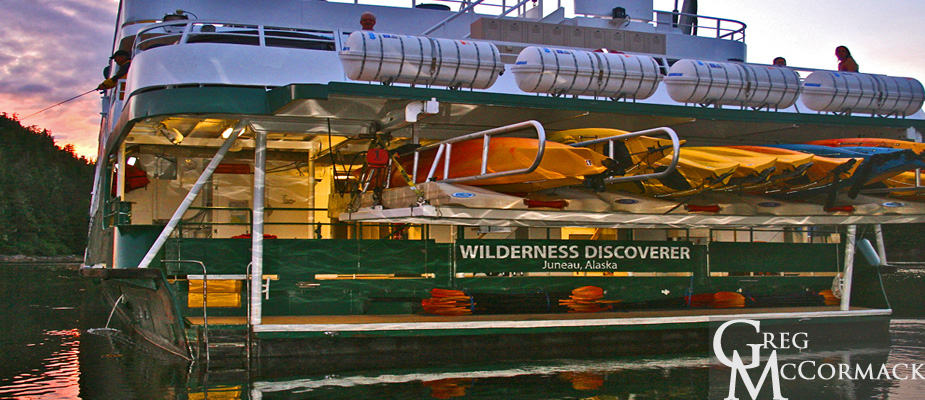
Nature can reveal truths to those that have an open mind and heart. Of course, being in the right place at the right time helps.
Thanks to Captain Marce for choosing to bring us here!
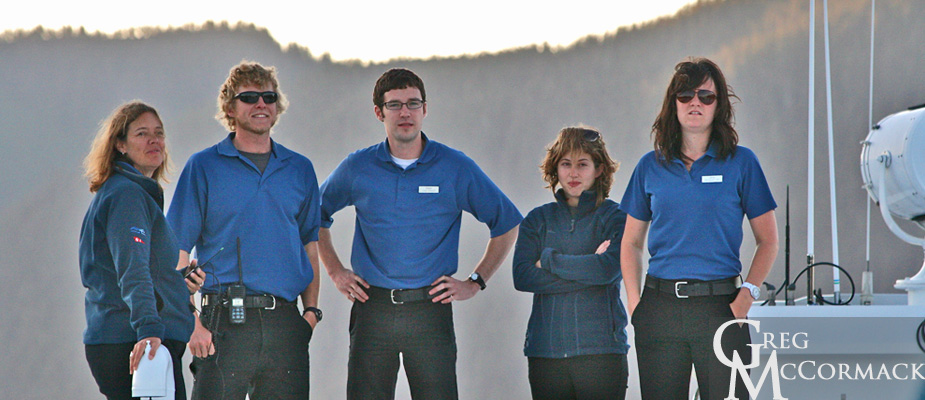
Monday | July 11
September 26, 2011 by admin
Filed under InnerSea Discoveries
Klawock
“The white man must treat the beasts of this land as his brothers. What is man without the beasts? If all the beasts were gone, we would die from a great loneliness of spirit…for whatever happens to the beasts also happens to the man. All things are connected. Whatever befalls the earth befalls the children of earth.” –Chief Seattle, Puget Sound Suwamish Tribe 1854
More sunshine! We awake early and enjoy the slow cruise and docking at the pier in the town of Klawock, located on the windward side of Prince of Wales Island.
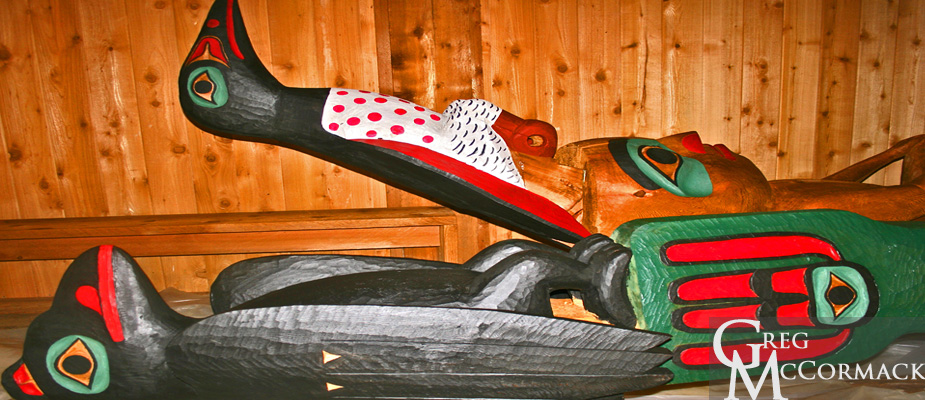
Our Tlingit hosts take us on a walk to see the totem-carving shed.
We also see the longhouse that holds the newly carved and painted totems.
A ¼-mile away behind the local shopping mall lies an empty lot that has dozens of old totems lined up in a row, exposed to the sun and rain. On the 1-mile walk back toward the ship, we visit the totem park at the center of town. Celebrations and pole-raising will take place in early August for 5 or 6 totems. Years of hard work and carving have gone into these amazing totems.
I have a couple of volunteers help me with a plankton tow on the pier. The pier lies in the middle of an estuary, where the river meets the sea. We can see the bounty of life floating beneath the ship including schooling fish, ctenophores and the lions mane jellyfish.
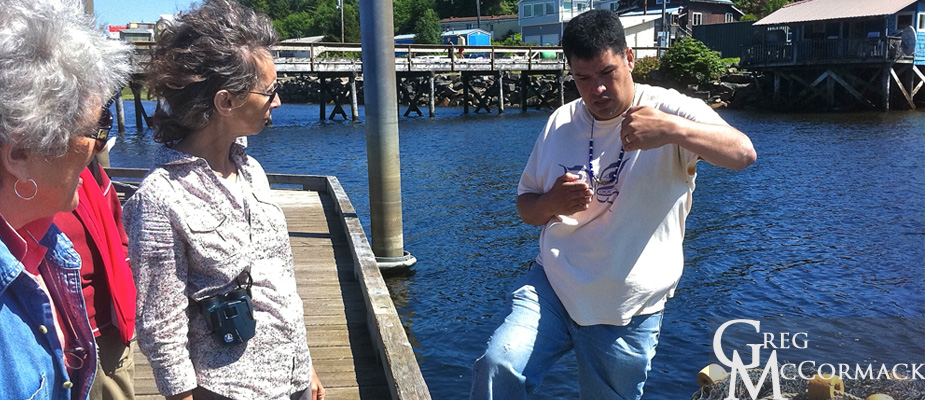
Back aboard, I set-up two stereoscopes and pour the contents of the plankton tow into specimen dishes for observation.
In the afternoon, we are back in Sea Otter Sound. Our wildlife spotters are able to find a couple of sea otter rafts. An announcement from the bridge alerts guests about a small-craft advisory in effect. Therefore, we won’t be crossing Chatham Strait over to Baranof Island.
As a result of the small-craft warning, we’ll be looking at an itinerary change that we all will be excited about. It sure is appreciated when folks on an expedition-style voyage have a flexible attitude, adapting to different circumstances!
The unknowns on any trip add to the excitement! Our expedition leader and captain spend hours pouring over the charts to determine what would provide the most interesting alternative (to sea-sickness and possible damage to items on the ship).
Sunday | July 10
September 26, 2011 by admin
Filed under InnerSea Discoveries
El Capitan
“Everybody needs beauty as well as bread, places to play in and pray in, where nature may heal and cheer and give strength.” –John Muir “The Mountains of California”
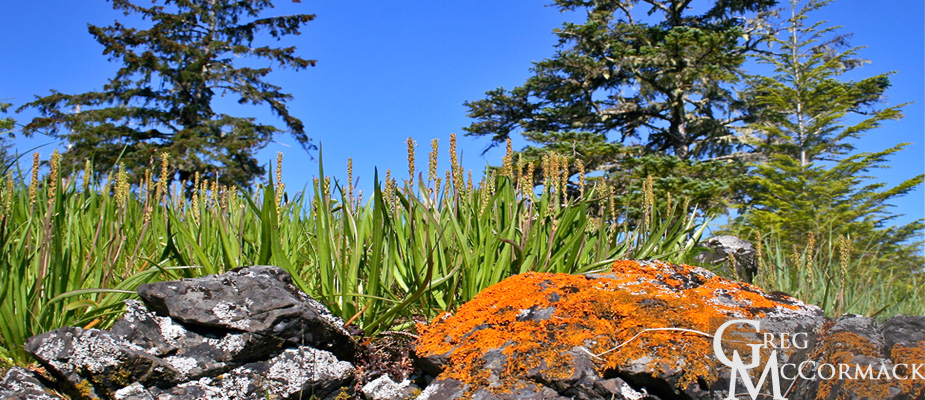
All of our guests are asked to go through our three “station rotation” trainings in kayaking, stand-up paddleboarding, small boat and bear safety.
Each “evolution” occurs in a different area of the ship (two in the lounge and one on the top deck).
After grabbing paddle jackets and depositing them in the lockers, adventure-seekers are ready for disembarking on our first full day of activities at Prince of Wales Island.
We anchor at the north end of El Capitan Passage where Dry Pass enters a bay approximately ½ mile wide by 3 miles long.
Despite the fact that there has been heavy logging in the past (clear cuts are visible along with a logging road on the north shore that leads to a small, private lodge), the place is peaceful and scenic.
My job this morning is to provide a “kayak clinic” for beginning kayakers out in the bay. I demonstrate paddling techniques, bracing, how to turn around, get the rudder up and down among other pointers.
“We could try the ‘Eskimo Roll’ if you’d like?”, I asked jokingly. The temperature of the waters here are in the high 40’s to low 50’s Fahrenheit, or about 10 degrees Celsius. If we were to practice rolling and submerging, we’d want to don dry suits.
Highlights along the shoreline include a Sitka black-tailed deer (doe with fawns) browsing on grasses above the beach wrack or strand zone, bald eagles at their nest, breaching salmon and best of all: Sunshine!
On our way back to the ship, I recruit other kayakers to help find macro-algaes, in particular the bull kelp. The pneumatocyst or air float can mimic the head of an otter, especially when there is a wind chop or swell on the sea surface. We find some un-attached Nereocystis leutkeana floating with its holdfast attached to a tiny rock. We haul it aboard and put it in a bucket for further examination later today.
In the afternoon I lead a less intense version of a forest walk that doesn’t include 367 steps up a steep hill to a cave.
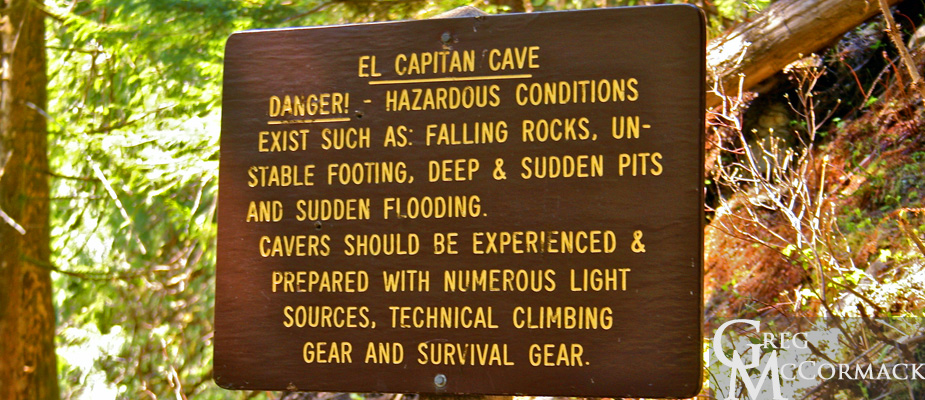
After my introduction explaining safety in bear country, I address my group of intrepid travellers with the theme for the day, one that has been a favorite of mine over the four decades that I’ve been leading interpretive walks:
“Folks, instead of hiking, we will saunter—serendipitously–along these Forest Service roads. Horace Walpole, a British writer in the mid-1700’s, wrote a fairy tale called the ‘Three Princes of Serendip’. They had a knack for the unexpected, for discovering things that they had no idea they’d find. So let’s use all of our senses and see what we might come across over the next 90-minutes.”
Our finds included the stinky raceme of the skunk cabbage, scatological findings from several mammals, squirrel pine cone middens, flowers, mushrooms and various birds that I identified “by ear”, amongst other delightful finds.
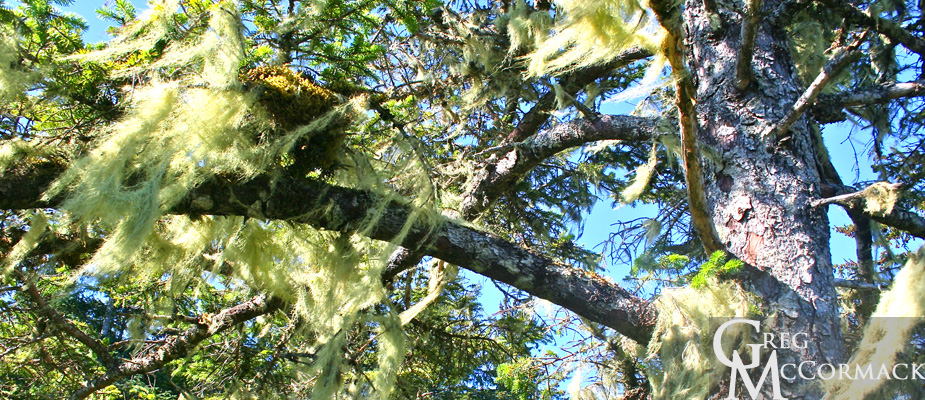
Back aboard, I give a talk entitled “The Multifarious Uses of Nereocystis leutkeana”, a demonstration of the marvelous seaweed called the “bull kelp”. There are a lot of histrionics involved, including audience participation and hand-held specimens.
Here’s a few of the highlights:
• Bull Kelp is an annual that can grow to 20 meters
• The range of this nearshore brown algae is from central California to Alaska
• The decimation of the (urchin-eating) Sea Otter by the Russians led to an increase in the herbivorous (kelp-loving) sea urchins and a subsequent decrease in kelp and what the kelp forest harbors, including many dozens of invertebrates and fishes
• Native American uses include food and medicine, and recreational uses including ceremonial speaking tube, musical instruments, siphoning hose, jump rope, lion tamer, target practice, etc.
I entertain folks by using a knife to cut the kelp specimens and volunteers entertain everyone by using the hollow stipe as a trumpet-like horn, bugling the announcement for dinner!
Saturday | July 9
September 14, 2011 by admin
Filed under InnerSea Discoveries
“If I had influence with the good fairy who is supposed to preside over the christening of all children, I should ask that her gift to each child in the world be a SENSE OF WONDER so indestructible that it would last throughout life, as an unfailing antidote against boredom and disenchantments of later years, the sterile preoccupation with things that are artificial, the alienation from the sources of our strength.” –Rachel Carson
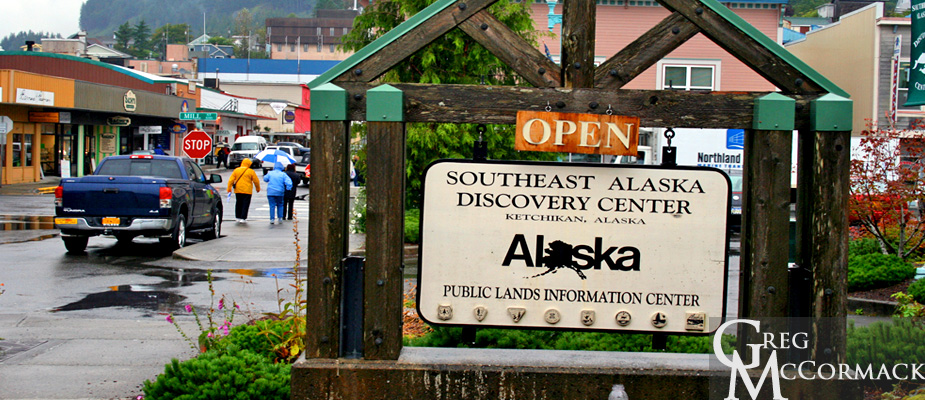
All of the M/V Wilderness Discoverer crew forms a line off of the ship on the dock and we shake hands, hug and express our fond farewells to passenger-guests. Folks are very thankful for the natural history interpretive talks I gave over the week. My favorite compliment was one that spread over the ship about a search engine like Google called “Greg-gle”. A guest explained: “Instead of finding an answer by Googling, we think the best way to get an answer is to Greg-gle a query. You were so full of amazing answers on a multitude of subjects.”
One passenger said I would make an amazing minister with my views on Nature. Another said that I was more than a PhD…that I must have several honorary degrees with all of my knowledge on a variety of subjects. An Aussie stated I should run for President and that I would be famous in all of Australia for my ice-swimming and imitation of a seal on an ice-berg.
My fellow colleagues get a boost from the many compliments they received for a job well done. Each one of us, with our outgoing personalities and the pride we take in our jobs, makes small-ship cruising a big hit in the cruise industry. We feel good in knowing that our new company is profitable, as we hear rumors that InnerSea Discoveries may be purchasing some new vessels for upcoming itineraries next year. Kudos to the home office for their expertise in choosing this itinerary and recruiting great guides and crew. We are all giving memories for a lifetime for our guests.
After preparing the ship for the next group of guests, we have about an hour to ourselves onshore for R&R or personal business. It is fun to see how busy this town can get with a huge cruise ship in port!
Thursday | July 7
September 14, 2011 by admin
Filed under InnerSea Discoveries
“I look forward to an America which will not be afraid of grace and beauty, an America which will protect the beauty of our natural environment….” –John F. Kennedy
Into Yes Bay we go for a day full of adventures. We are lucky to see some sunshine today, as this region receives close to 160 inches or over 13-feet of rain a year.
I lead a group of experienced snorkelers (all but one are certified divers) to a couple of sites, one on each side of the bay. It’s entertaining to see the initial reaction when folks get in the water and the wetsuit if filled up with 45-degree Fahrenheit water.
We have a lot of fun kicking along the shoreline. It’s atypical to have a group that can get down underwater without the use of weights, which is not an easy thing to do for a novice. Diving down deep requires a familiarity with the Vasalva maneuver, which helps relieve the pressure on the ears and sinuses.
It takes a few forceful kicks to get down 10, 20 or 30 feet. I come up with handfuls of colorful invertebrates to show our group and small-boat driver.
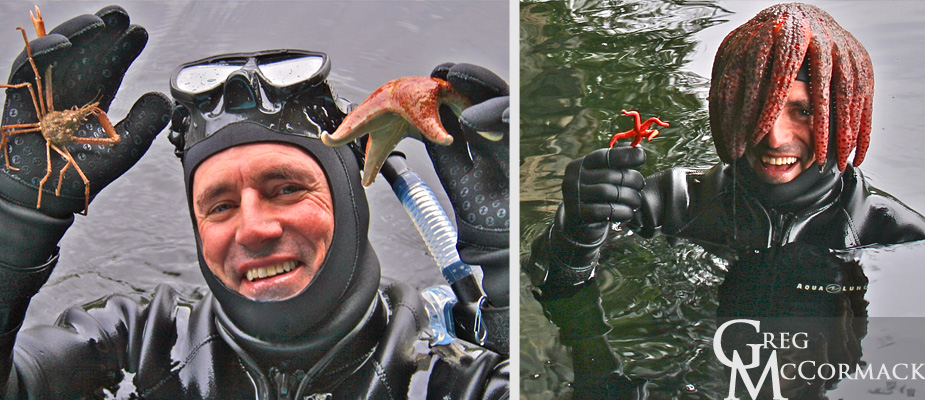
A fabulous sunset leads to quiet reflections for guests. A wonderful time is had by all out on the deck with appetizers and drinks.
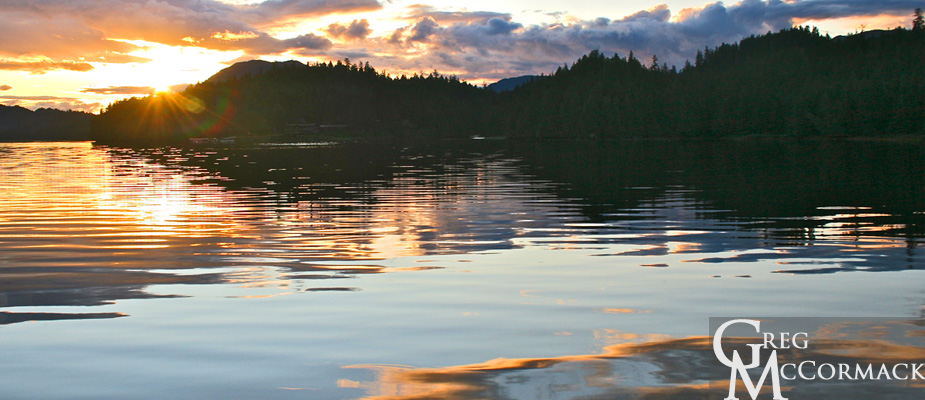
Our Chief Mate Kevin Martin entertains everyone on the forecastle or fo’c’s’le by playing the banjo.


